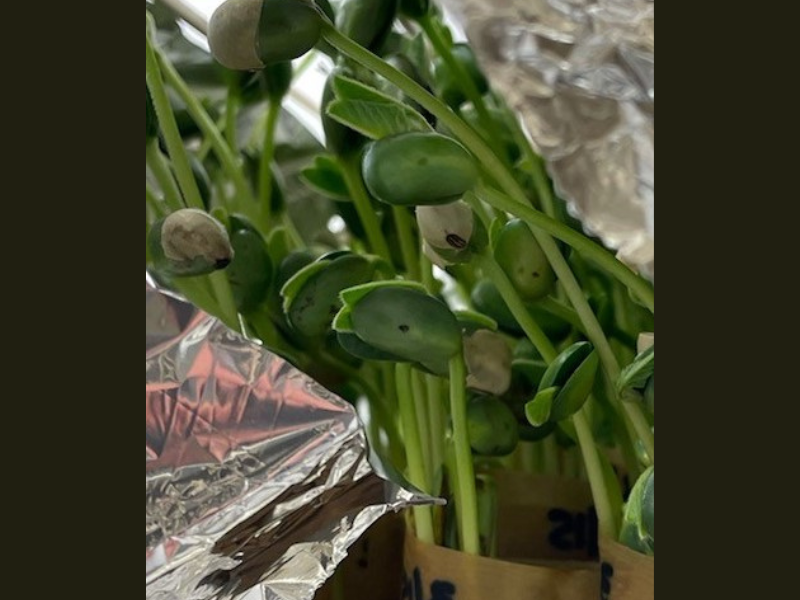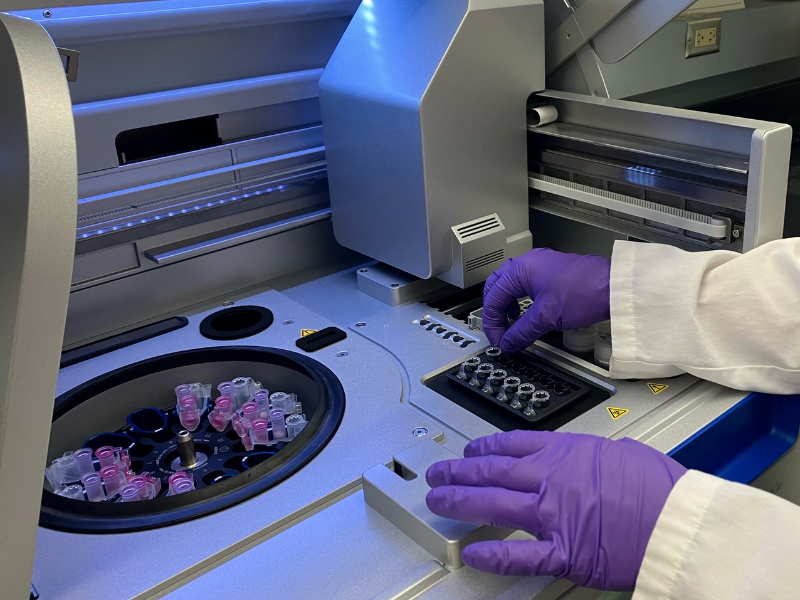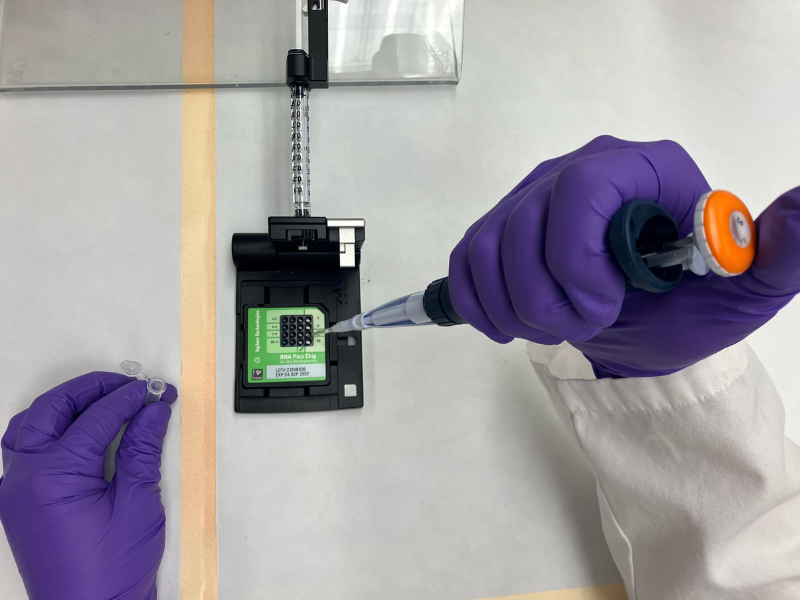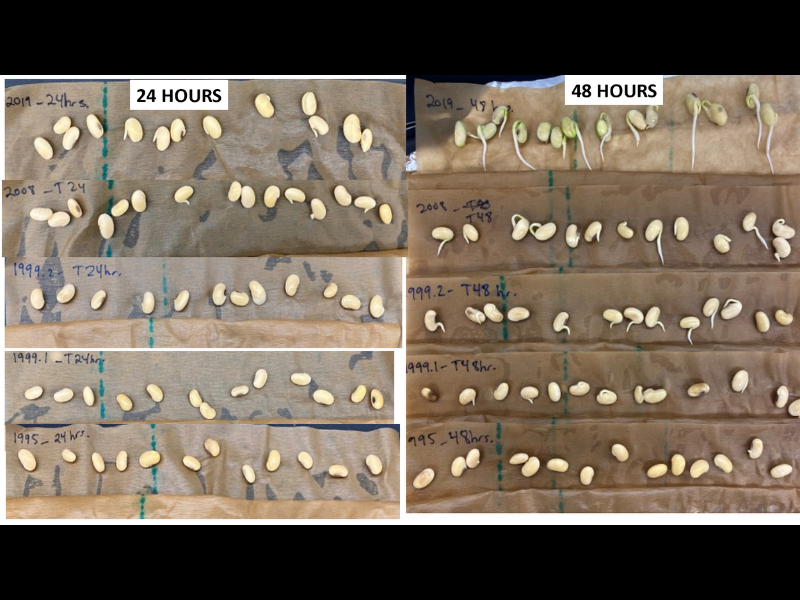USA
April 3, 2023
by Adityarup "Rup" Chakravorty
Aging is a part of life, and plants are no exception. The life cycle of a plant is felt in genebanks that store plant materials, such as seeds. Plant materials in genebanks may be accessed by farmers, researchers, conservationists, and others for breeding. But for a genebank to provide useful germplasm to growers, the seeds stored there must be alive when harvested. And as the stored seeds start to age, fewer and fewer of them live long enough to germinate. So, genebanks must continuously monitor stored seeds to ensure they haven’t aged beyond their ‘expiration date’ and lose ability to germinate.
 A germination test of soybean seeds. The team found that measuring RNA integrity detected aging in soybean seeds much earlier than using germination assays. Credit: Lisa Hill
A germination test of soybean seeds. The team found that measuring RNA integrity detected aging in soybean seeds much earlier than using germination assays. Credit: Lisa Hill
In a new study, researchers successfully measured aging in stored soybean seeds by checking the integrity of RNA in the seeds. Ribonucleic acid (RNA) is a nucleic acid present in all living cells. Its principal role is to act as a messenger carrying instructions from DNA for controlling the synthesis of proteins. The new method is faster and used less material than checking whether stored seeds germinate when planted, the current ‘gold standard’ of measuring seed age and viability.
The study was published in Crop Science, a publication of the Crop Science Society of America.
 RNA being extracted from soybean seeds in a lab. Extracting RNA using a robot reduces variation in RNA integrity number (RIN) and increases the sensitivity of detecting changes. Measuring RNA integrity accurately predicts aging rates of different species. Credit: Lisa Hill
RNA being extracted from soybean seeds in a lab. Extracting RNA using a robot reduces variation in RNA integrity number (RIN) and increases the sensitivity of detecting changes. Measuring RNA integrity accurately predicts aging rates of different species. Credit: Lisa Hill
“We could detect changes in seed age by measuring RNA integrity about five times sooner while using only a fraction of the seeds one would use for a germination assay,” says Christina Walters, the lead author of the study. Walters is a researcher at the USDA-ARS National Laboratory for Genetic Resources Preservation in Fort Collins, Colorado.
Germination tests can also be expensive and need a lot of human resources. “Large seed collections simply don’t have the resources to be testing and regenerating seeds unnecessarily,” says Walters. But waiting too long between germination tests can also be a problem. The seeds may die between monitoring intervals and the collection would be completely lost. “So we thought, wouldn’t it be great if we had a crystal ball that gave us certainty about seed age without needing to germinate?” says Walters.
 Extracted RNA is loaded onto chips and ready for electrophoresis that will detect fragmentation patterns. RNA integrity number (RIN) describes that pattern in a calculation. In this study, the researchers compared results of their RNA integrity measurements with results from germination tests. Credit: Lisa Hill
Extracted RNA is loaded onto chips and ready for electrophoresis that will detect fragmentation patterns. RNA integrity number (RIN) describes that pattern in a calculation. In this study, the researchers compared results of their RNA integrity measurements with results from germination tests. Credit: Lisa Hill
Much like it’s more famous ‘cousin’ DNA, RNA occurs in strands of various lengths. Walters and colleagues measured the sizes of RNA strands in stored soybean seeds over several years. In previous research, they could detect changes in RNA fragment sizes before detecting other symptoms of aging or death in seeds. In this study, the researchers compared results of their RNA integrity measurements with results from germination tests.
The team found that measuring RNA integrity detected aging in soybean seeds much earlier than using germination assays. For example, changes in seed health could be detected within 7 years of storage using the RNA integrity method. In contrast, using the same seeds, germination tests could detect changes after 15-17 years. By that time, loss of seed viability was already problematic. “You actually want to catch changes in seed lots before they stop germinating,” says Walters. Measuring RNA integrity could help genebank managers do just that.
 The process of germination in aging soybean seeds. These are ‘Williams ‘82’ soybean that were harvested (top to bottom) in 2019, 2008, 1999 (2 rows) and 1995 and germinated in 2022. Credit: Lisa Hill
The process of germination in aging soybean seeds. These are ‘Williams ‘82’ soybean that were harvested (top to bottom) in 2019, 2008, 1999 (2 rows) and 1995 and germinated in 2022. Credit: Lisa Hill
For soybean, the results from the RNA testing could be achieved with many fewer seeds. In some cases, significant declines in seed health could be detected with as few as 22 soybean seeds using the RNA integrity method. Detecting the same declines using germination assays would have used up hundreds of valuable seeds.
Walters and her team have used RNA integrity assays on a few other species in addition to soybean. “Measuring RNA integrity accurately predicts aging rates of these different species,” says Walters. “Now we need to explore an even broader group of species.”
Ultimately, Walters hopes these findings will help genebanks. “Sometimes genebanks are so much a part of infrastructure that they become invisible,” says Walters. “But I think the service genebanks provide is fundamental to the future that we’ll leave for our children.”